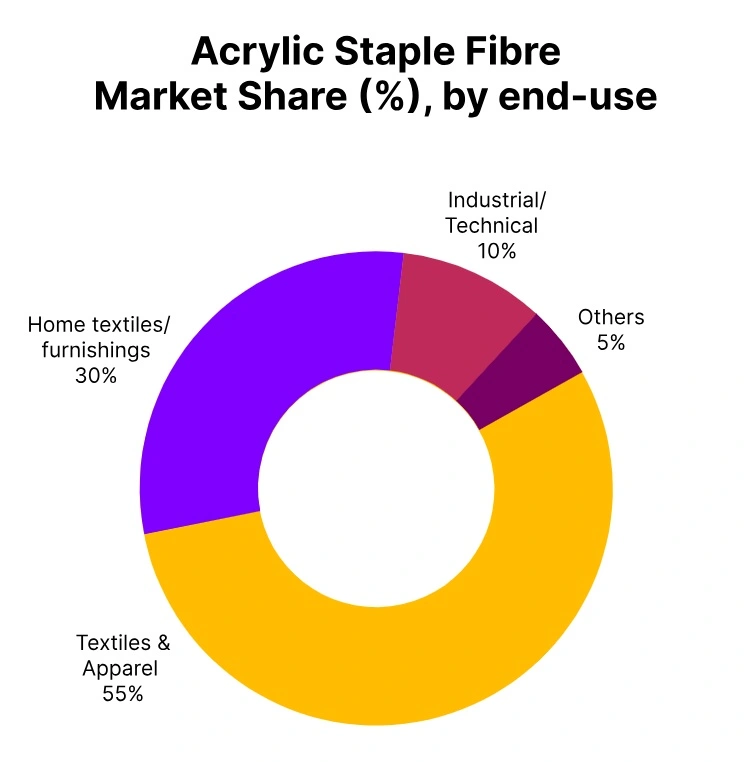Price-Watch’s most active coverage of Acrylic Staple Fibre price assessment:
- 3.0D/ 64 mm Bright FOB Laem Chabang, Thailand
- 3.0D/ 64 mm Bright CIF Nhava Sheva (Thailand), India
- 3.0D/ 64 mm Bright CIF Jakarta (Thailand), Indonesia
- 3.0D/ 64 mm Bright CIF Port Kelang (Thailand), Malaysia
Acrylic Staple Fibre (ASF) Price Trend Q3 2025
In Q3 2025, global Acrylic Staple Fibre (ASF) price trend experienced a moderate decline of around 2.5–3%, mirroring easing feedstock Acrylonitrile costs and subdued downstream demand. Regional supply chain adjustments, heightened competition from polyester fibres, and reduced procurement activity within textile and hygiene segments contributed to the softer market tone.
Production rates across Asia continued at stable levels, resulting in inventory accumulation and gentler pricing. Moving forward, stable raw material inputs and reduced end-user demand are likely to sustain a cautious outlook for Acrylic Staple Fibre (ASF) prices into the next quarter.
Thailand
According to Price-Watch, in Q3 2025, Acrylic Staple Fibre (ASF) price trend in Thailand has been reflective of lower costs of Acrylonitrile feedstock prices and ongoing weakness across both apparel and nonwoven applications. Export competitiveness weakened amid regional oversupply, slowing global clothing consumption demand, and increased competition from perceptions of synthetic substitutes as cheaper.
In September 2025, acrylic staple fibre prices in Thailand continued their downward trend, as ASF export prices FOB Laem Chabang decreased by 2.8% from the previous quarter, averaging USD 1520-1600 per metric ton. Although operating rates remained relatively stable, high inventories and weak foreign orders encouraged Thai exporters to lower their prices, while supply chain volatility and weak demand from key markets were expected to keep prices under pressure into Q4 2025.
Indonesia
In the third quarter of 2025, the Acrylic Staple Fibre (ASF) price trend in Indonesia has been influenced by sluggish demand for garments and home textiles, as well as lower costs of acrylonitrile, resulting in reduced production costs. Increased imports from neighboring producers added downward pressure, although exchange rate weakness caused a slight increase in purchase prices.
Overall, in September of 2025, ASF prices in Indonesia further declined, with average ASF import prices CIF to Jakarta, continuing to show weakness as total textile sector activity remained low, with significant regional over-supply. Deteriorating OEM orders combined with weak finished-good turnover further disincentivized restocking, compounding overall price weakness during the month.
Malaysia
In Q3 2025, the Acrylic Staple Fibre (ASF) price trend in Malaysia has been influenced by lower Acrylonitrile feedstock costs and stronger competition from inexpensive polyester staple fibre, both of which expanded supply and reduced supplier leverage. In September 2025, Acrylic Staple Fibre (ASF) prices in Malaysia fell with Acrylic Staple Fibre (ASF) import prices CIF Port Kelang reflecting subdued activity across textile and disposable hygiene sectors. Ongoing uncertainty in regional export markets further dampened trading sentiment, while steady local production and limited inventory liquidation kept Malaysian ASF prices subdued through late Q3.
India
Accourdng to Price-Watch, As of September 2025, India’s Acrylic Staple Fibre (ASF) price trend has remained on a balanced footing with import prices not moving much and domestic prices down by 1.2%. The prices of the acrylic staple fibre in India have reflected steady demand from the spun yarn, apparel, and hygiene markets, while muted activity has been observed in the spinning and apparel sectors.
Costs of Acrylonitrile feedstock have been stable, and imports from Southeast Asia have facilitated an ample supply while restricted inventory restocking has constrained any further downward price activity, if not modest increases. Conversely, competitive pricing for polyester and a lack of export orders have limited any price recovery.



